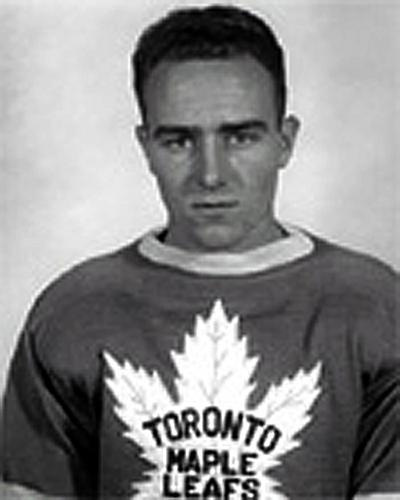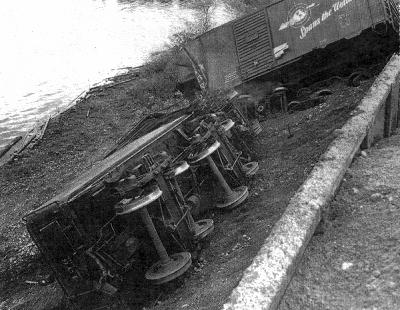 |
May 16, 2008
The History of a Mystery Train Wreck Solved
|
On April 24th, 2008 I received an
email from Paul Kent from Highland Park, Illinois. Paul's father, Dr. Geoffrey
Kent had died on April 17 and the family was writing a biography of him. In
particular Paul wanted to know about a September 14, 1952 train wreck near Morel
on the CPR line in which is father was involved providing medical services as a
passenger.
I had never heard of the accident or where Morel
was, and could not find it on maps on file at first. Roy Summers recognized the
name as a stop a few kilometers west of Mattawa near Taggart Lake
and close to the Mattawa River. A couple of library books on the CPR did not
include Morel but this happens when a location becomes redundant. The name
Morel rang a bell because the Morel name is well known in Mattawa. Henry Morel
was a Member of Parliament for twenty-two years and Leo Morel wrote the book
Mattawa: the Meeting of the Waters.
I went to the Nipissing University Library and
asked one of the information officers for help accessing newspapers on that
date. The online Globe and Mail came up with the story and the Nugget on
Microfilm had a long story with photos.
Dr. Geoffrey Kent had a remarkable medical career
after his graduation in 1939 from the University of Amsterdam. He
escaped Amsterdam in May 1940 with 60 young Jewish children in his charge just
hours before the Nazi invasion of the city. He was a member of the Desert Rats
Division of the Royal Army Medical Corps from1 943 to 1947 when he moved to
Canada as a pathologist. It was while in Canada that he was on the CPR train on
that fateful day in September 1952.
 |
Dr. Geoffrey Kent M.D. in his military days -
photo submitted by family |
At 4:30 in the morning his train and
another passenger train collided in the fog. One train had lost its bearings in
the fog and had not pulled off on the Morel siding to let the other past. The
150 passengers were saved from more serious injury by the presence of 5 cars of
express baggage that absorbed the impact. Forty passengers and 5 crew members
were injured, 2 critically. Most of the 150 passengers had some cuts and
bruises or strain. One of the crewmen was well known Regis (Pep) Kelly, a
member of the North Bay Hockey Hall of Fame. Kelly played on two Memorial Cup
teams and turned pro in 1934-35 with the Toronto Maple Leafs and played to
1942. His profile in the Hall of Fame notes that Kelly was a fireman and
engineer on the CPR and was injured on the job in 1952 (in the train wreck at
Morel).
 |
Regis "Pep" Kelly, fireman on the train -
former Toronto Maple Leaf player living in North Bay.
Submitted photo. |
The cars of both trains were "torn apart and
shredded along the right of way". The newspaper reported that 2 of the cars
were loaded with fresh fish and burst open spreading their content along the
track. Early spectators carried off whitefish and Lake Trout dinners.
Torn out telephone poles cut off communications with
North Bay and Mattawa.
J.R. Meakes, Publisher of the Sudbury Star was on
the train and wrote a report on the accident saying it was a "miracle" that
saved them. He said that a few more miles an hour would have put the trains in
the Ottawa River 100 feet away down a 45 degree incline.
Meakes also noted the work of Dr.
Kent when he wrote "Then I met a hero of the wreck. A fair slight young doctor
whose quiet-spoken Oxford English calmed imminent hysteria while his sure hands
made a rapid examination of the injured.
The only doctor traveling in the two trains, he
was bound for Montreal from Western Canada on No. 10. Like
the nurses, the doctor made us promise 'not to mention names.' But the doctor
does not need to be named to be remembered by the passengers of No. 9 and
No.10. His early check established that little harm had come to passengers on
No. 10. But the engineer and firemen of both locomotives were seriously injured
- the crew of No. 10 critically.
As dawn cleared the heavy ground fog a gas scooter
from Mattawa chugged up and took the first load of the most seriously injured to
Mattawa Hospital."
 |
1948
CPR crash on Temiscaming spur line. Nugget photo. |
On September 22, 1952 G.H. Baillie
Vice President of the CPR sent a letter to Dr. Kent where he stated that "the
assistance which you so willingly gave was instrumental in alleviating the
suffering and distress of many of the injured and we would like you to know that
this is deeply appreciated."
(When I told this story to one of my grandchildren
he wanted to know if Dr. Kent was related to Clark Kent, the
mild-mannered reporter of the Daily Planet who was Superman.)
Dr. Kent went on to get a PhD in
Pathology and had a multitude of prestigious positions in his field, publishing
160 articles. He had a distinguished career in research, administration and
teaching. It is appropriate that his contribution outside Mattawa over half a
century ago is remembered and appreciated. If anyone has any further
information on the accident let me know at the address below.
The CPR had other accidents in the area over the
years. Two on the CPR's line to Temiscaming took place in the same time frame.
On October 12, 1948 three CPR employees were killed when six
freight cars got away and traveled 1000 yards down a steep grade and hit a
standing engine (see photo). Marcel Gauthier was killed in 1957 on the
Temiscaming line during Hurricane Audrey when a culvert washed out.
Heritage Perspective Home Page
| 
![]() Past
Forward is now on Facebook "LIKE" us to keep in touch
Past
Forward is now on Facebook "LIKE" us to keep in touch